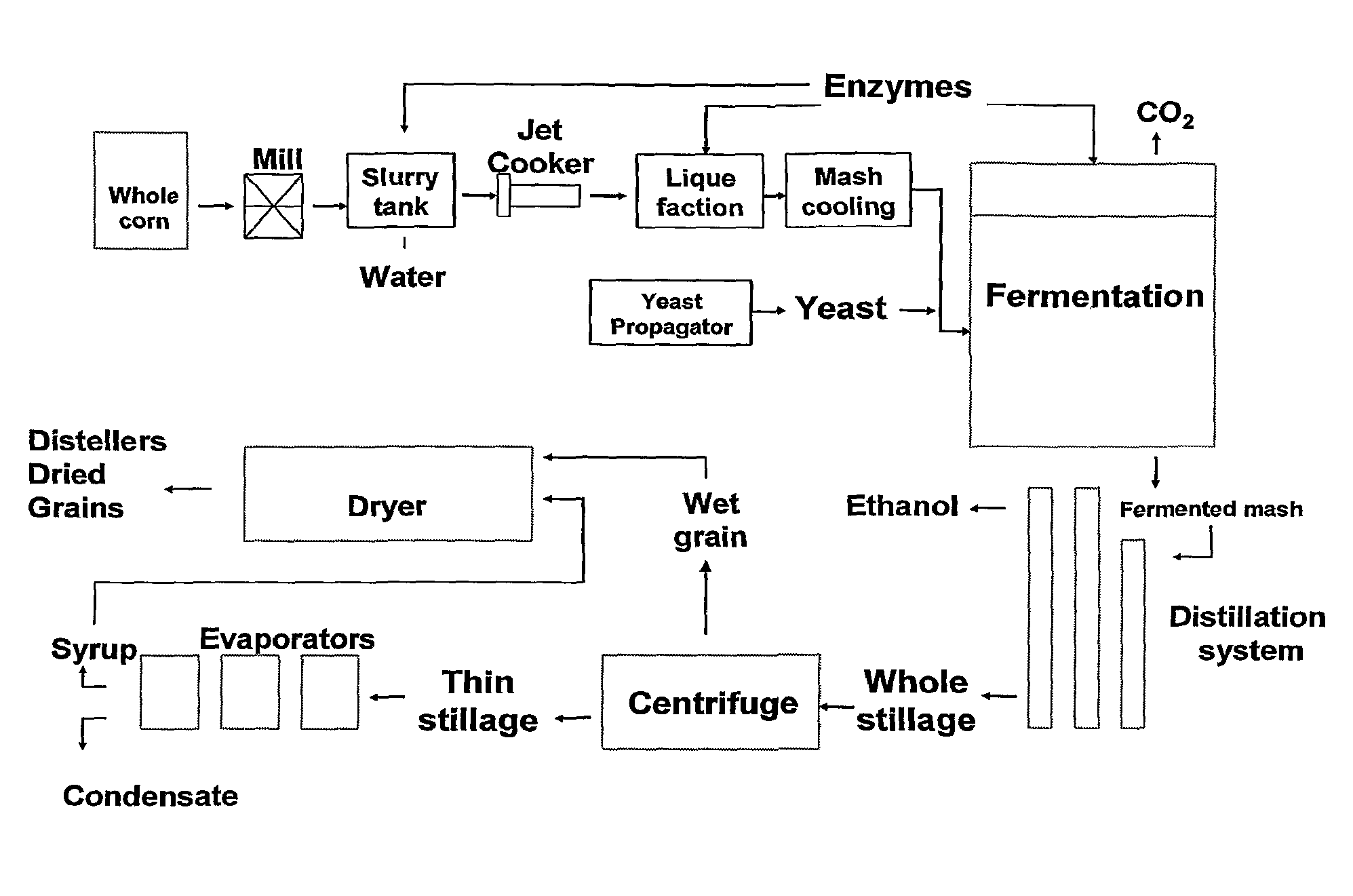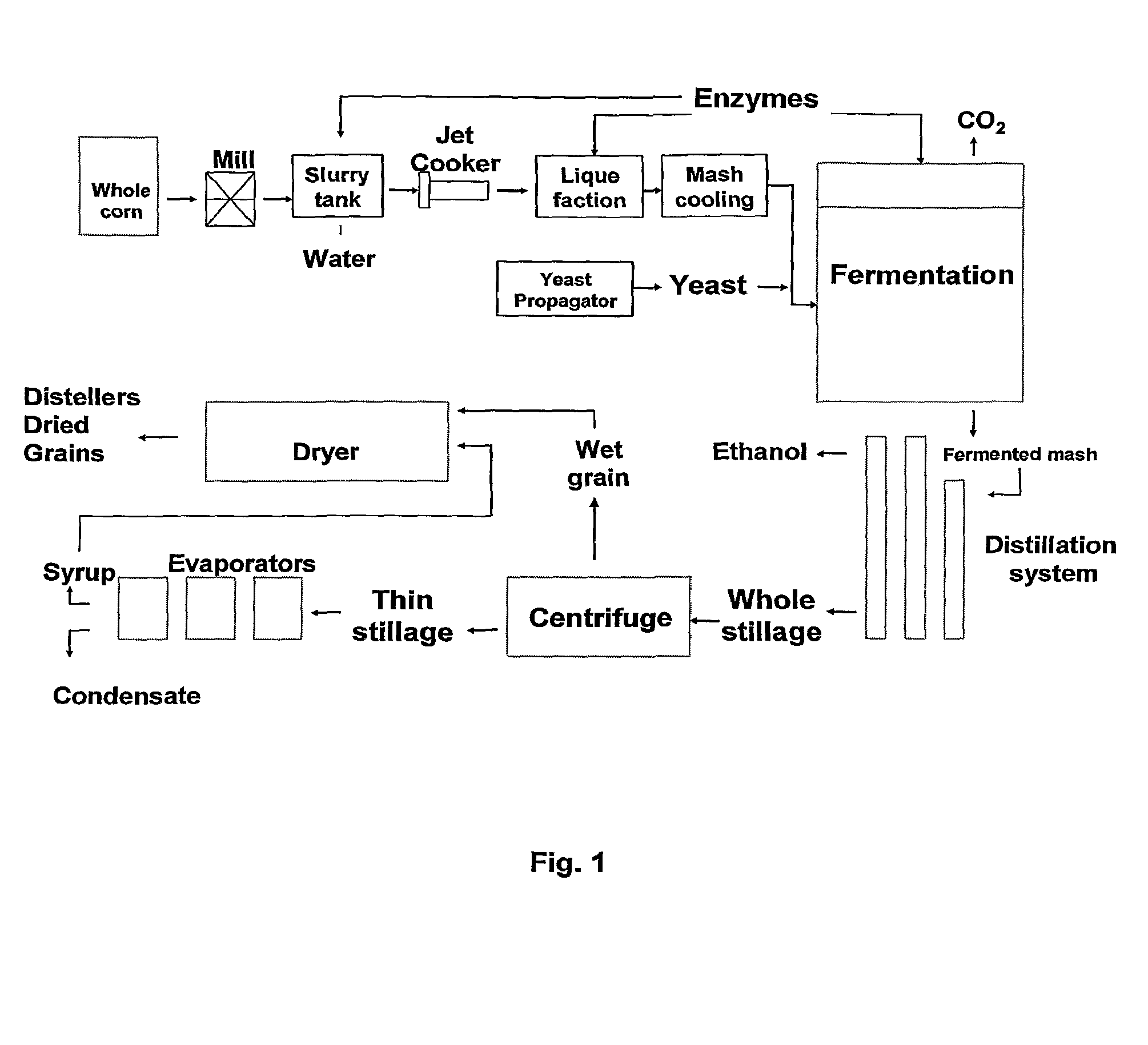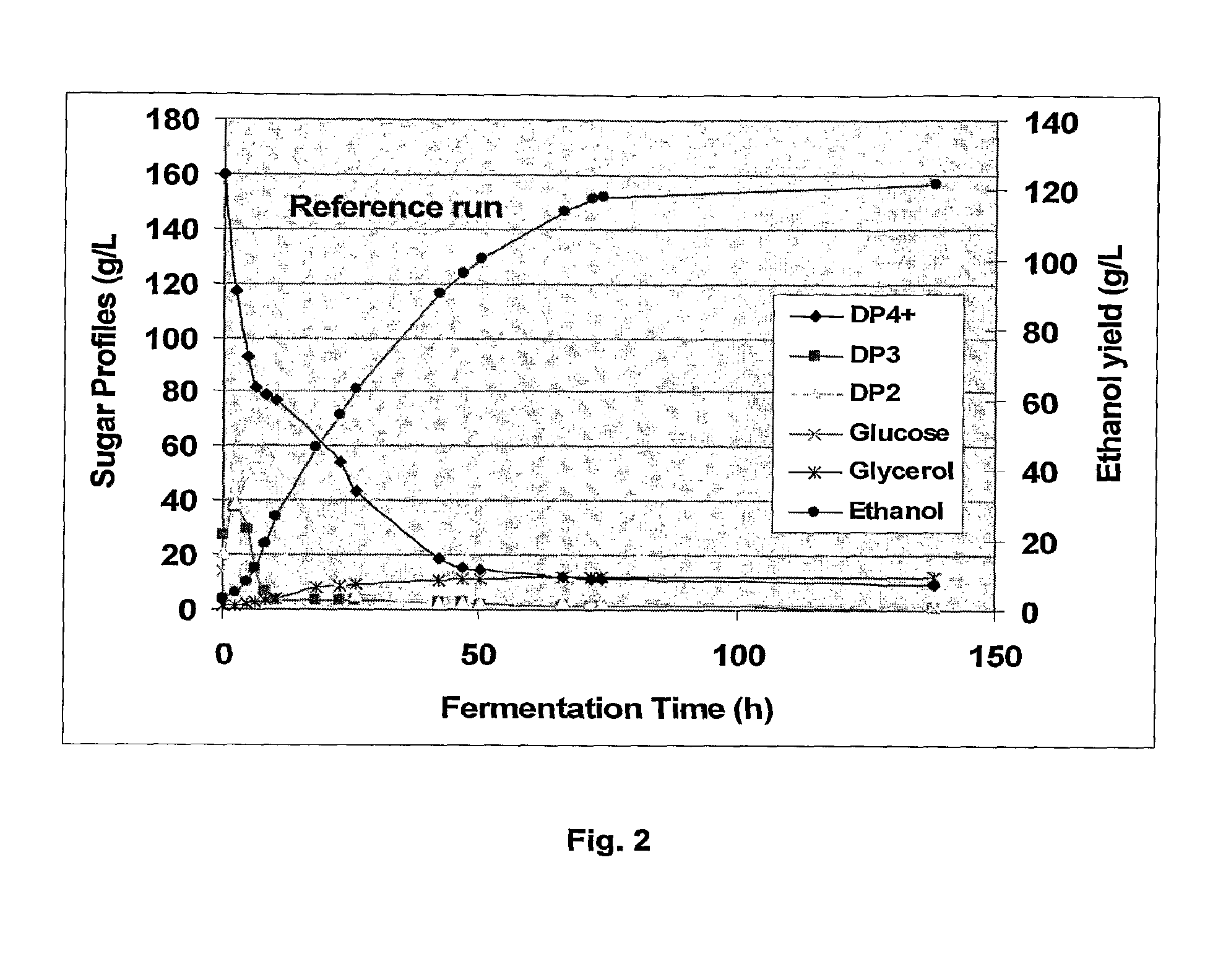Process of producing a fermentation product
a technology of fermentation product and process, applied in the direction of fermentation, biofuels, etc., can solve the problem of difficult production of synthetically
- Summary
- Abstract
- Description
- Claims
- Application Information
AI Technical Summary
Benefits of technology
Problems solved by technology
Method used
Image
Examples
example 1
Liquefaction with Bacterial Acid Alpha-Amylase
[0131]100 mL of milled corn slurry is liquefied with 50 NU / g dry solids (DS) of Bacterial Alpha-Amylase A from Bacillus stearothermophilus. The corn mash has about 30% dry substance (pH 5.4). The mash is heated to 85° C. for 0.5 hour. The temperature is then lowered to 70° C. and mash is then treated with acid fungal alpha amylase B from Aspergillus niger having the amino acid sequence disclosed in SEQ ID NO:1. The enzyme loading is 0.05 AFAU / g dry solids. After 1.0 hours samples are taken for HPLC analysis. Temperature is brought down to 32° C. for carrying out simultaneous saccharification and fermentation (SSF).
SSF with Glucoamylase, Alpha-Glucosidase and Maltose-Generating Enzyme
[0132]Once the liquefaction is over, pH is adjusted to 5.0. The mash is then treated with Aspergillus niger glucoamylase (0.1 AGU / g DS) including a side activity of Aspergillus niger acid alpha-amylase (the ratio between AGU and AFAU is approx. 9:1), Alpha-Gl...
example 2
[0133]A 33% dry solids (DS) whole corn mash was liquefied in a three-step hot slurry process using 50 NU / g DS of Bacterial Alpha-Amylase A from Bacillus stearothermophilus. First the slurry was heated to about 82° C. and one third (⅓) of the alpha-amylase was added to initiate liquefaction. Then the slurry was jet-cooked at a temperature of about 112° C. to complete gelatinization of the slurry. Then the slurry was cooled to about 77° C. and the remaining two thirds (⅔) of the alpha-amylase were added to finalize hydrolysis.
[0134]250 mL liquefied whole corn mash was filled into a 500 mL blue cap bottles with magnetic stirrers. The pH of the mash was adjusted to about 5.5. The bottles were incubated in a water bath at about 32° C. for 40 minutes before dry yeast (Saccharomyces cerevisiae) was added at a dosage of 0.2 g / bottle equivalent to 15 mill cells viable count per mL. The bottles were closed using a yeast-lock filled with concentrated H2SO4. The fermentation at 32° C. was conti...
example 3
[0135]A 30% D.S. slurry of milled wheat grain is made in room temperature (RT) tap water. For each treatment 2×250 g are portioned in 500 mL blue cap fermentation flasks. The pH is adjusted to 6.0 and enzymes are added: Bacterial Alpha-Amylase A from Bacillus stearothermophilus alpha-amylase (0.15 KNU / g DS), Beta-amylase WG (0.0125 mg EP / g DS), and alpha-glucosidase from Oryzae sativa (0.0125 mg EP / g DS). A pre-treatment is carried out for 60 minutes at about 55° C. in a shaking water bath. The flasks are cooled to about 32° C., 0.25 g dry bakers yeast (corresponding to 10 million viable cells / g mash) is added to each flask, the flasks are equipped with air locks, and weighed. The flasks are incubated in a shaking water bath preset at about 32° C. and a simultaneous saccharification and fermentation (SSF) process step is carried out for 96 hours. The flasks are weighed at regular intervals and CO2 weight loss (g) is measured for monitoring of the fermentation progress. The relations...
PUM
| Property | Measurement | Unit |
|---|---|---|
| temperature | aaaaa | aaaaa |
| temperature | aaaaa | aaaaa |
| temperature | aaaaa | aaaaa |
Abstract
Description
Claims
Application Information
 Login to View More
Login to View More - R&D
- Intellectual Property
- Life Sciences
- Materials
- Tech Scout
- Unparalleled Data Quality
- Higher Quality Content
- 60% Fewer Hallucinations
Browse by: Latest US Patents, China's latest patents, Technical Efficacy Thesaurus, Application Domain, Technology Topic, Popular Technical Reports.
© 2025 PatSnap. All rights reserved.Legal|Privacy policy|Modern Slavery Act Transparency Statement|Sitemap|About US| Contact US: help@patsnap.com



